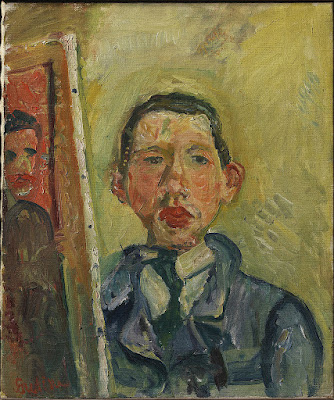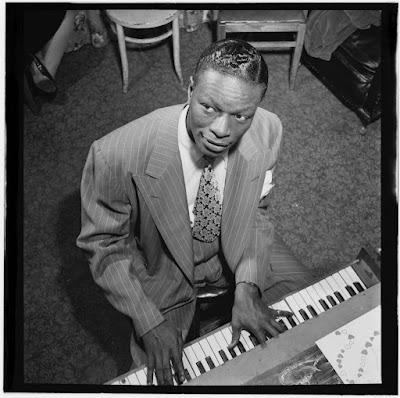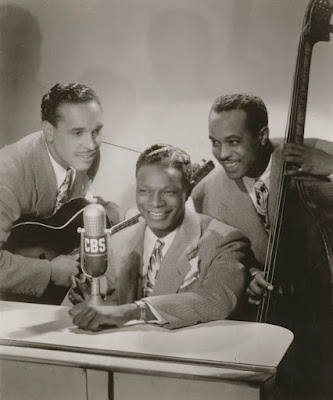"Every life holds an epic tale, even if no one alive remembers it.”
~ Greg Melville
I recently moved to the Parkville area of Baltimore, Maryland, near Double Rock Park and Parkwood Cemetery. I started walking to the cemetery since it's less than a mile from my house and the grounds of the cemetery are lovely. I remembered that my paternal grandparents are buried here and rather than asking for a map to find them in the cemetery office I just started rambling the grounds and turned it into a scavenger hunt. I think it took me about 7-8 trips to finally find my grandparents who are buried in a family plot in the Laurel section. I was surprised and pleased to find that my great-grandparents were buried here as well. I took photos of their gravestones and uploaded them to a site called Find A Grave, an international repository for documenting gravesites-- it is a database of deaths. In searching a bit around Find a Grave, I found more of my ancestor's gravestones in different cemeteries around Baltimore, photographed by strangers, and there for me to add to my family tree.
My trips to the cemetery became more frequent and intentional. I started out by randomly rambling through the cemetery and photographing stones or names that I thought were interesting or unusual. When I started interacting with Find a Grave more, I realized that Parkwood Cemetery only had about 13% of the grave sites available to search with GPS information. The more I uploaded gravestone pictures with data the more I realized that there are literally thousands of undocumented gravestones here as well. The total number of burials in Parkwood Cemetery is unknown but my rough guess is that there are approximately 45,000 souls resting here, off Taylor Avenue in Parkville.
Cemeteries Are For the LivingBy this time I had just fallen in love with this suburban cemetery. It's always active here-- there are joggers, walkers, and strollers, some out with dogs, just enjoying the rolling 130 acres of Parkwood Cemetery. The cemetery itself is also very active. There are graveside burials here regularly. I have seen stonemasons putting new information on gravestones. When the weather is good there is grass to cut. I have seen many people here at grave sites just sitting or standing, having a visit with a deceased loved one. The grave sites are filled with flowers (real and fake), notes, stones, pennies, closed beer cans, and I even saw a bullet on someone's headstone-- I am still not sure if that was a good message or not. At Christmas, family members had placed Christmas trees and I even found cookies and candies left in plastic bags on gravestones. While some people may think that cemeteries are just for dead people it is in fact the reverse. Cemeteries are for the living.
What is Find A Grave?My visits here really turned into an obsession. Since November 2022, I have input almost 7,000 memorials and uploaded over 14,000 photos to Find a Grave. The percentage of gravestone photos with GPS went from 13% to 51%. The number of gravestones photographed went from 65% to 79% of the estimated number of sites. Many of the photos that I upload are attached to records that already existed, entered by another Find a Grave member. What I realized was that I enjoy collaborating with others online with the same purpose-- to sort out the great family tree of humans. As a librarian, I realized that my new intention was to catalog the entirety of Parkwood Cemetery. I also see the gravestones as original documents of sorts that name the deceased and offer up their dates of birth and death. It is truly an archive of lives lived, wars fought, and lives cut short by illness, accident, and even murder.
Different Roles on Find A GraveFind a Grave is owned by Ancestry.com. Many librarians I know use Find a Grave as a first go-to resource when someone is seeking genealogy information. It is like Wikipedia in that anyone may enter information and suggest edits, but it is an encyclopedia of the deceased. I am the default Memorial Manager for all of the memorials I have input and review each Correction that comes in to add to a memorial. I consciously use Ad Block to block all ads on Find a Grave since I am already contributing to their website. What I have found out about Find a Grave is that many people contribute to the site in different ways. I am adding photos with GPS info embedded and names and dates. Other users are adding virtual Flowers to cemetery memorials presumably as a form of remembrance. More recently I made a friend on Find a Grave who reached out to me. My friend Lynne and her husband love to fulfill photo requests at several cemeteries in the Parkville area of Baltimore. Lynne has so far fulfilled over 2,500 photo requests and added almost 14,000 photos to the Parkwood database. She invited me to join her on her annual survey of the entire cemetery looking for gravestones that people from all over the world have requested. When we find them, the pics are uploaded and the photo request is fulfilled. This is fun and a good workout! Other Find a Grave users, sometimes called gravers, research family history using Ancestry or Family Search to flesh out biographies of the deceased using census data or obituaries. Gravers can also upload photos of gravestones and crowdsource the transcription to the Find a Grave community. While these records chronicle the dead, it is as if each record is a living document that is continuously being added to and improved.
Cemeteries Lack Digital DatabasesIf you are wondering why we can't just go to the cemetery office and ask for the location of a grave, it's because the people who work in the cemetery office are not helpful to non-family members. Most cemeteries are for profit entities and as such, many cemetery office workers work on commission-- their goal is to sell plots and services, not help random gravers fulfill photo requests. Also, cemetery records are notoriously old school. The Parkwood Cemetery has a digital database that began in 1991-- the older records are still on paper. My dad and I recently visited the office at Baltimore Cemetery seeking any info on Rayme burials there and they showed us records kept on paper 3x5 index cards! While cemeteries may not have a digital database, Find a Grave volunteers are creating this one record and photograph at a time.
Collaborative Database ManagementEntering cemetery stone information is a healthy collaboration of genealogists, historians, and others who are interested in documenting the data and photographs of each gravesite. The database of memorials at Parkwood Cemetery is currently almost 30,000 individuals. I spend time going through the database and identified hundreds of duplicate memorials that are merged into one record. I correct obvious spelling errors when I see them. When I add a new gravestone photo and there is a birth or death date missing from the record, I always suggest adding the new data. MOST of my suggestions are accepted and some are rejected. This is how I found out that while a birth or death date may be carved in stone, it doesn't necessarily mean it is correct. I have added several headstones with dates and suggested edits only to find out that the memorial manager had conflicting (and probably more correct) information. Never trust the data on a headstone, always verify with other sources.
Genealogy Lessons LearnedI used to think that if two names were one a gravestone and one was male and one was female, and they had similar birth years that both of those people must be married. In the early days of my memorial adding I would often suggest that the memorial manager link the two as a married couple. Once I got a nice message back from a memorial manager saying that the couple buried together and on the same gravestone were brother and sister. This is a concept that is perhaps lost on 21st century America. Back in the old days and just like Marilla and Matthew Cuthbert from "Anne of Green Gables" by Lucy Maud Montgomery, siblings who never married might have lived together and cohabitated to work a family farm.
Gravestone PoetryAnother fascination with the cemetery is the variety of stones, inscriptions, and memorials that people have created here. Sometimes I find what I call Easter Eggs in the cemetery. I use this term to describe messages that have been carved in stone that are less about names and dates and more poetic messages left to remind us of the nature of life and death. A recent find is a slight misquote from Henry Ward Beecher who says, "Death is but the dropping of a flower that the fruit may swell." I got a chuckle that the gravestone says "drooping" instead of "dropping." I was also moved by a gravestone that reads simply, "Daddy". The informality is a delightful departure from the standard Father but it is also heart-breaking in its intimacy. To quote Joe Kloc from the NYT again, "There’s comfort and wisdom to be found in the eerie poetry of gravestones."
Cemeteries as a DatabaseWhen I am inputting headstone photographs and recording the names and dates that are on those stones, I do feel as if I am honoring those who came before me. I also hope that future genealogists or family researchers may more easily find information on their family tree from this as well. The raw database of genders, births, and deaths as a whole can reveal information about the population of Baltimore, Maryland from 1920 (when the cemetery opened) to the present day. When I search for 'using cemetery databases' I can see that there are high schools that are using cemetery databases to teach history, statistics, and general science skills. For example, one thing I have noticed from inputting thousands of memorials is that there are a lot more babies in the cemetery from the early part of the 20th century. Sadly, this makes sense. In a time before antibiotics and childhood vaccines, many more babies and children died.
A Cemetery Is a Library of Completed LivesI had been feeling weird about my cemetery obsession. I have a friend who started calling me Morbidia, which makes me laugh. Is it weird to enjoy exploring cemeteries? But then I read an article in the New York Times by Joe Kloc who concluded that a cemetery is a library of completed lives. As a librarian, this resonated with me and affirmed that it is OK to want to catalog a cemetery because it is also a library of sorts. My project to catalog all of Parkwood Cemetery is vast. If I can enter about 500 memorials a month, it will still take about 3+ years to complete. And since Parkwood is a working cemetery there are new folks arriving every week. The reality is that I could be working on this project for the rest of my life and I am OK with that. Afterall, there is nothing like a walk through a cemetery to put life in perspective.
`Recommended Reading:
"Over My Dead Body: Unearthing the Hidden History of American Cemeteries" (2022), by Greg Melville
























.jpg)












